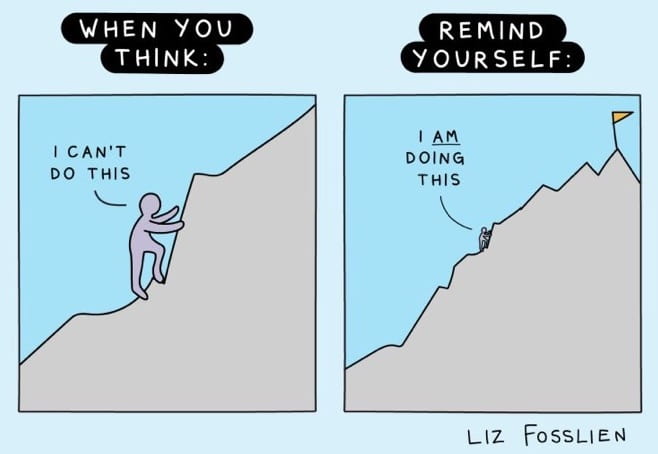Mindset and Metacognition at the Mid-Point
Teaching our students to have a “growth mindset” and to check-in with their own learning using metacognition strategies is something many of us do at the beginning of the semester when we address the “big-picture” of the semester and encourage our students to set goals, use good time-management, and develop effective study strategies. However, at this point in the semester, post spring break, when students might be falling behind or feeling overwhelmed with looming projects and deadlines, it’s a good time to check back in with your students about their growth mindset and metacognition strategies. Here are 4 tips to share with your students to help them stay motivated:
1. Effort means you’re learning!
 Remind your students of one of the principles of growth mindset — when something feels hard, it doesn’t mean you’re not good at it; on the contrary, it means you are learning! Showing students videos on neuroplasticity, and explaining to them that, when we learn, our brains grow new neural pathways (and, like building muscle, this takes effort), can remind them that they can be successful at learning hard things!
Remind your students of one of the principles of growth mindset — when something feels hard, it doesn’t mean you’re not good at it; on the contrary, it means you are learning! Showing students videos on neuroplasticity, and explaining to them that, when we learn, our brains grow new neural pathways (and, like building muscle, this takes effort), can remind them that they can be successful at learning hard things!
2. Reflect on your learning strategies
Prompt your students to reflect on their study strategies and their performance on exams and assignments. It can help to build a low-stakes assignment into the course after every major assignment to help students develop the habit of self-assessment, and show them that the process of self-regulated learning is an ongoing cycle. For more on self-regulated learning strategies, check out this blog post “Help Students Improve their Learning Strategies.”
assignments. It can help to build a low-stakes assignment into the course after every major assignment to help students develop the habit of self-assessment, and show them that the process of self-regulated learning is an ongoing cycle. For more on self-regulated learning strategies, check out this blog post “Help Students Improve their Learning Strategies.”
3. Check-in with your goals
If you asked students to set goals at the beginning of the semester (and you should!), set aside 5 minutes in class (or provide a prompt in iCollege) to have them check-in with their goals and their progress in the course. This is a good time to remind students that the small steps they are taking now are bringing them closer to their “big-picture” goals, and that renewed effort now will have a large pay-off in the future. Share stories of your own struggles and successes, or those of students you’ve had in the past; inspire your students to stay motivated and keep their goals at the forefront of their mind when they feel overwhelmed.

4. Reach out for help!
Finally, it helps to reassure students that no amount of “grit” or goal-focused effort can overcome all obstacles, and that sometimes we need help and support outside of the classroom. Be sure to encourage students to seek you out in office hours (and it helps to rebrand office hours to make them less intimidating) if they need help, and remind them of the services available to them such as tutoring, academic coaching, counseling, financial assistance, and help with housing and food insecurity. It can be helpful to include links to Student Success and the Dean of Students office in your iCollege section. Most of all, let your students know that you care about their success and that you can be a resource to them; this more than anything can make a difference when a student starts to struggle.*
*For more on how “Compassionate Pedagogy” can help students use their cognitive bandwidth more effectively, see this post or check out Bandwidth Recovery : Helping Students Reclaim Cognitive Resources Lost to Poverty, Racism, and Social Marginalization by Cia Verschelden (available online at the library).